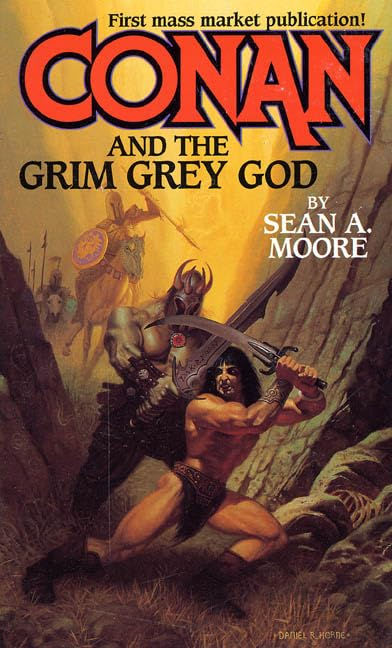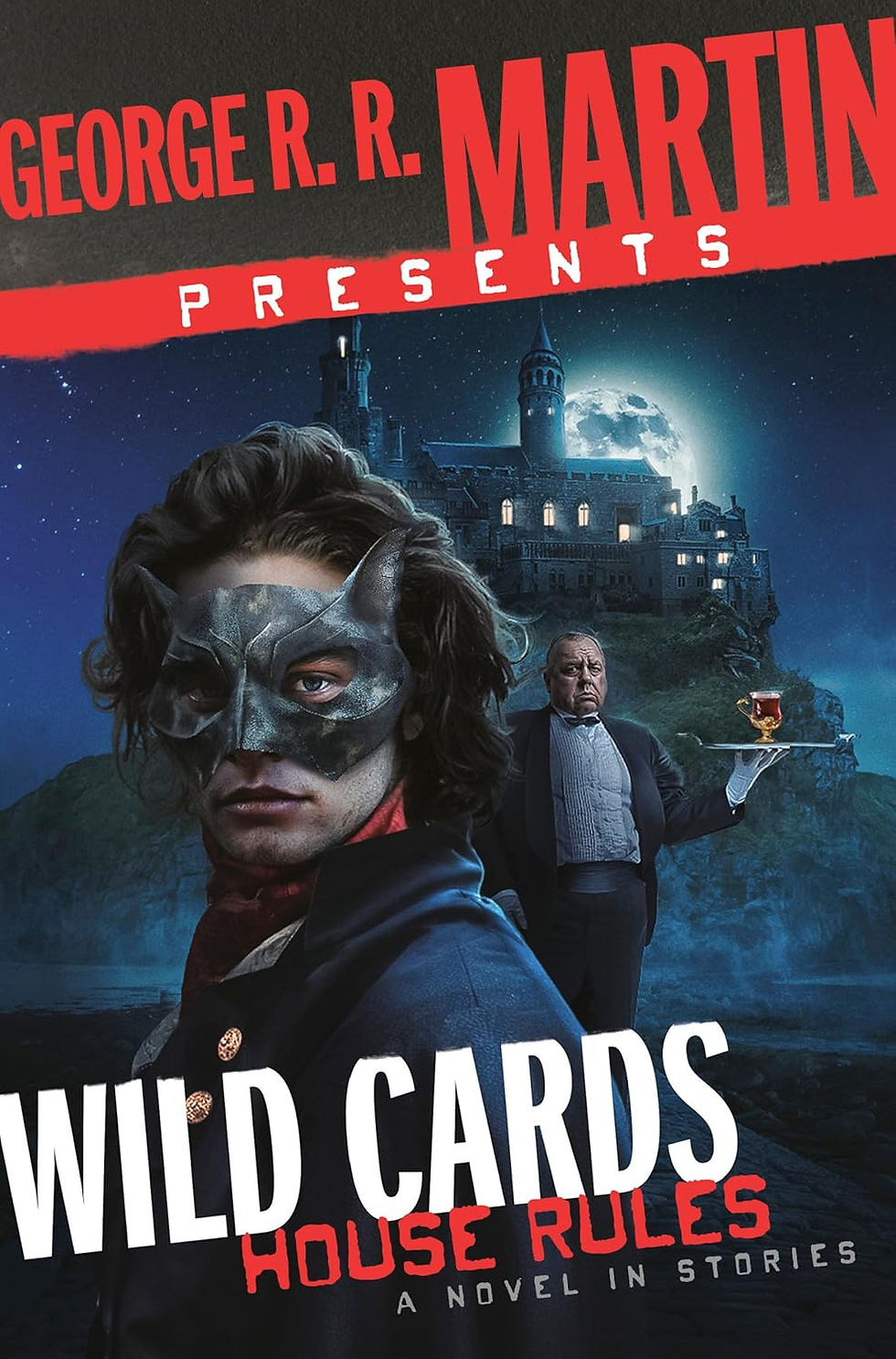Struck by Stinger
- Greg O'Driscoll
- Apr 26, 2023
- 7 min read

Stinger
by Robert R. McCammon
Recently I was on a stakeout that went wrong in a bad way. Not the kind conducted by police officers or private eyes, but the kind of stakeout familiar to comic collectors. I was casing something advertised as an estate sale which turned out to be a moving sale. There were at least eight long boxes of comics described as mostly indie titles, Image stuff, and horror comics. If it looked good, I was prepared to make an offer on all eight boxes.
Unfortunately, things had gone South (appropriate considering the author I am reviewing). The guy running the sale had not fully prepared. He was envisioning a soft opening, thinking he wouldn’t get many bites on a Thursday morning. The bargain hunters were already prowling by the time I got there. It was total chaos. Luckily, no one was interested in the comics except me.
After being one of the first people to arrive, I waited over two hours to look at those comics. My patience was not rewarded. The seller had not separated what they would sell from what they couldn't bear to part with. What they indicated they would sell didn't interest me. Oh well, better luck next time.
Along Came a Stinger
On the way out, I stopped at a table full of paperback and hardback books. The price was one dollar a paperback, a little steep considering the condition of a few. Due to my long wait, the seller cut me a deal on a stack of nine paperbacks for five bucks. Because of the seller’s preferred genre, these were horror-oriented titles or media tie-ins. I was pleased to find something I don't see in the wild all that often anymore, Robert McCammon.
Specifically, the book was Stinger. I read Robert McCammon back during the winddown of the '80s horror boom, Swansong, The Wolf’s Hour, Blue World, and A Boy’s Life (which I really need to review after my semi-annual reread), but not Stinger. I was excited to find something by a competent author whose work I had always enjoyed. So, let's dive right in, shall we?
Stinger is the kind of horror novel you don't see much of anymore. Or maybe you do, I don't know. These days, horror hasn’t retained as big a hold on the popular imagination, at least in prose form. McCammon was right up there with the other big names. He never managed to eclipse King but shared many of his strengths. He was also just as good, if not better than Dean Koontz. I understand that, after a dispute with his publisher, he eventually moved in a more historical fiction direction, but the book in question is very definitely from his horror period.
Welcome to Inferno
Stinger is set in the town of Inferno, Texas, a small dusty place, almost completely dried up and ready to blow away. Built around a once-successful copper mine, Inferno’s material resources dwindled and from there the businesses and population followed. Inferno’s final senior class is about to graduate in a few days. No one knows what will happen then, especially because large portions of the graduating class are divided into two rival gangs ready to go to war, the Renegades and the Rattlesnakes.
The Renegades are the shit-kicking white kids of Inferno, entrenched in an abandoned apartment building-turned-private fortress. The Rattlesnakes are the Mexican and Native American teens living in Bordertown just across the Snake River. I'm not sure if there ever really were gangs like this in Texas high schools in the '80s, especially not the colorful and dramatic characters comprising both gangs. The Renegades particularly seem to have embraced an '80s punk aesthetic that doesn't strike me as something that reached as far into Texas as a tiny dying town like Inferno.
Still, it makes for an interesting group; guys like the monosyllabic Tank who never takes off his camouflage painted football helmet, Stoplight with his red and green hair, and Nasty the solo female Renegade, sporting her blonde mohawk and cut off jean shorts. The rival gang is just as wild in their way, sporting spiked bracelets, bandanas, and combat boots. One of the Rattlers, Zarra, eagerly wields a braided leather whip. Both sides are movie-ready menaces.
However, these aren't the main characters and exist mostly for local color (and later, cannon fodder). Aside from a few walk-ons, these are the key players: Cody Lockett, leader of the Renegades, and Ricky Jurado, leader of the Rattlesnakes. The Hammond family, consisting of teacher Tom, veterinarian Jessie, and their kids, Ray and little Stevie. Sheriff Vance and USAF Colonel Matt Rhodes are the nominal authorities during the crisis. Those are all the primary human players.
The other two players are nonhuman; Daufin—and Stinger.
Hunted and Hunter
Daufin is originally a nameless alien intelligence contained withing an indestructible, ebon sphere. Thought to be a piece of wreckage from a crashed UFO, only Jessie Hammond’s daughter Stevie can hear the chime-like song it makes. She steals the orb and tries to teach it by explaining the many pictures in her room. One of those pictures is of water and a dolphin.
A little brain switcheroo happens shortly after that. The alien inhabits Stevie's body and Stevie sleeps inside the black orb. When asked its name, the alien intelligence refers to itself as dolphin, pronounced and spelled "d-a-u-f-i-n" due to the alien thoughts being expressed through a little girl’s speech centers. Her preternatural intelligence gives the young girl a sometimes-eerie wisdom, confidence, and even menace. Daufin is a freedom fighter from a planet that's been persecuted and abused by Stinger’s masters.
The House of Fists (the best English approximation of the name that Daufin can manage) seek to steal a naturally produced substance on Daufin’s planet for use as a chemical agent to poison and destroy other worlds. First to rebel among her pacifistic people, Daufin is a revolutionary and a guerilla fighter. This doesn't change just because Daufin’s mind now inhabits the body of a little girl.
Escaped from a House of Fists prison planet referred to only as Rock 7, Daufin describes Stinger as a bounty hunter come to collect her. Stinger describes himself as an exterminator glad to kill any bugs that get in the way of his mission. Where Daufin is an intelligence, Stinger is physicality. Daufin is singular. Stinger is legion.
Under the Dome?
The alien invader moves about in subterranean tunnels, coming upon his victims from below and dragging them back to his ship. When those victims return, they are strangely altered, equipped with serrated talons and mouths full of needle-like fangs. These genetically altered agents speak Stinger’s words with their own voices and mannerisms but have been absorbed into a sinister hive-mind.
Stinger and his proxies prosecute his search for Daufin, and punish those who help her, within a very confined environment. Inferno and its inhabitants can’t escape him due to a shimmering violet-colored web of energy that surrounding the town. Mind you, this is many years, even decades in advance of Stephen King's Under the Dome, and I couldn't help noticing certain similarities.
The force fields in both books are caused by aliens, and as more and more of each town gets destroyed or burnt there is a buildup of toxic gases, dust, and exhaust fumes. No one in Inferno ever actually succumbs to these fumes, but the way in which the township is contained and how the smoke from the destruction of the town stays trapped within the force field definitely made me think of Under the Dome. McCammon beat King to the punch on that one.
Atypical Archetypes
What's great about Stinger is the way it's subverts so many expectations of a horror novel. Don't get me wrong, it's not reinventing the entire genre, but what I like is how so many of these seemingly familiar faces, essentially the same stock characters you see in every other horror novel from the 80s, break out of their roles. At the very least, many don't behave in the manner to which you would customarily expect them.
Neither leader of the two gangs are irredeemable juvenile delinquent sociopaths nor is it a case of one good gang leader and one bad one. Despite their high school gang costumes, Lockett’s skull earring, Jurado’s switchblade and slicked back hair, they are both actual human beings.
Sweaty, ill tempered, big-bellied Sheriff Vance isn't the sadistic megalomaniac that you would expect, especially after the first few chapters where he mostly plays to type. Later, we learn Vance is just a scared little boy on the inside, trying to do the right thing.
Celeste Preston is the widow of the Inferno’s founder. An alcoholic trophy wife, living off the carcass of a once-lavish mansion, she berates her Mexican housekeeper and sells off art and furniture piece by piece. Her dead husband supposedly buried a fortune somewhere nearby, and the IRS wants its cut. While caustic and sharp tongued, she isn’t just another irredeemable harpy ultimately doomed to a gruesome fate.
Paloma, grandmother of Rick Jurado and one of the few people he truly cares about, doesn't turn out to have psychic visions despite her long white hair and milky cataracts. Once again, McCammon deftly makes the familiar archetypes behave in a pleasingly atypical manner.
Sci-Fi Horror
Another cool thing is that, while definitely a horror novel, Stinger leans very heavily into science fiction. This isn't as atypical of '80s horror as compared to other things I've mentioned. Sci-fi and horror have always been close friends, and this was the decade that gave us John Carpenter’s The Thing and Ridley Scott’s Alien.
Essentially, it's the story of a fugitive landing on Earth and another alien coming to apprehend that fugitive. The people of Inferno are just unfortunate innocents caught up in the battle. If they happen to be in the way Stinger considers them another casualty of war. Daufin morns the loss but doesn’t let it deter her from her mission.
The concepts are basic but well described. Both aliens seem sufficiently alien. Their difficulty with human language and the different means by which each learns it are convincing. The brief glimpse of Daufin’s homeworld is bizarre and yet beautiful. The hellish interior of Stinger’s ship is the expected and appropriate setting for the final battle.
Things come to a satisfying conclusion. What happens once Stinger’s ship disappears back into space is left to the reader’s imagination. The potential for a sequel is there but unnecessary. Stinger is a tale whole and complete. I give it a strong recommendation. If this review has stung your curiosity, give it a look.



Comments